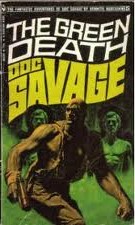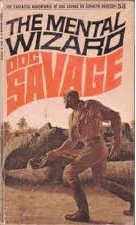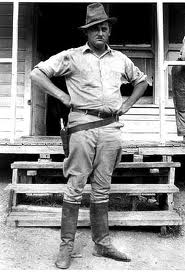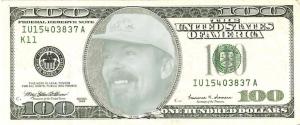Until I was about thirteen years old, I had regarded reading as something of a chore. Then, one summer, while visiting family, my cousin gave me some books to take home with me. On the ride back, I cracked one of them open – and ended up reading all four during our 800 mile drive. These books really lit me up against all of my own expectations.
The Bantam editions of the Doc Savage series are the books that really got me interested in exploring the possibilities of becoming an author. Over the next few years, I read seventy-two of these books. Bantam published over 180 of them, at one time putting out one title a month.
 |
 |
 |

There is a complicated backstory about the Doc Savage books. The stories were originally published in pulp magazines in the 1930s and 40s. The author of the stories was listed as Kenneth Robeson, but that was actually just a house name. Though the preponderance of the stories were written by an author named Lester Dent, a number of other writers were involved and contributed to titles in the series.
Dent developed a master fiction plot, called the Lester Dent Formula. Essentially, his approach for producing highly salable 6,000 word stories was to divide the story into four 1500 word parts, each with steps for building the suspense and sense of menace to keep the reader engaged. Ironically, it was likely that formulaic approach that made it possible for other authors to step in and write additional Doc Savage adventures so seamlessly that the reader would never guess there was no Kenneth Robeson. Continue reading “Book Formula”

 In the founding of every nation there are those who take up arms and fight for the cause and those who supervise the people who oversee the organizational units containing the clerical staff who type up and file the requisitions that make it possible to achieve victory within or slightly exceeding categorical budgetary constraints.
In the founding of every nation there are those who take up arms and fight for the cause and those who supervise the people who oversee the organizational units containing the clerical staff who type up and file the requisitions that make it possible to achieve victory within or slightly exceeding categorical budgetary constraints.  The pretty girl with the tastefully highlighted soft brown curls walked into my office and took a seat opposite my desk.
The pretty girl with the tastefully highlighted soft brown curls walked into my office and took a seat opposite my desk.